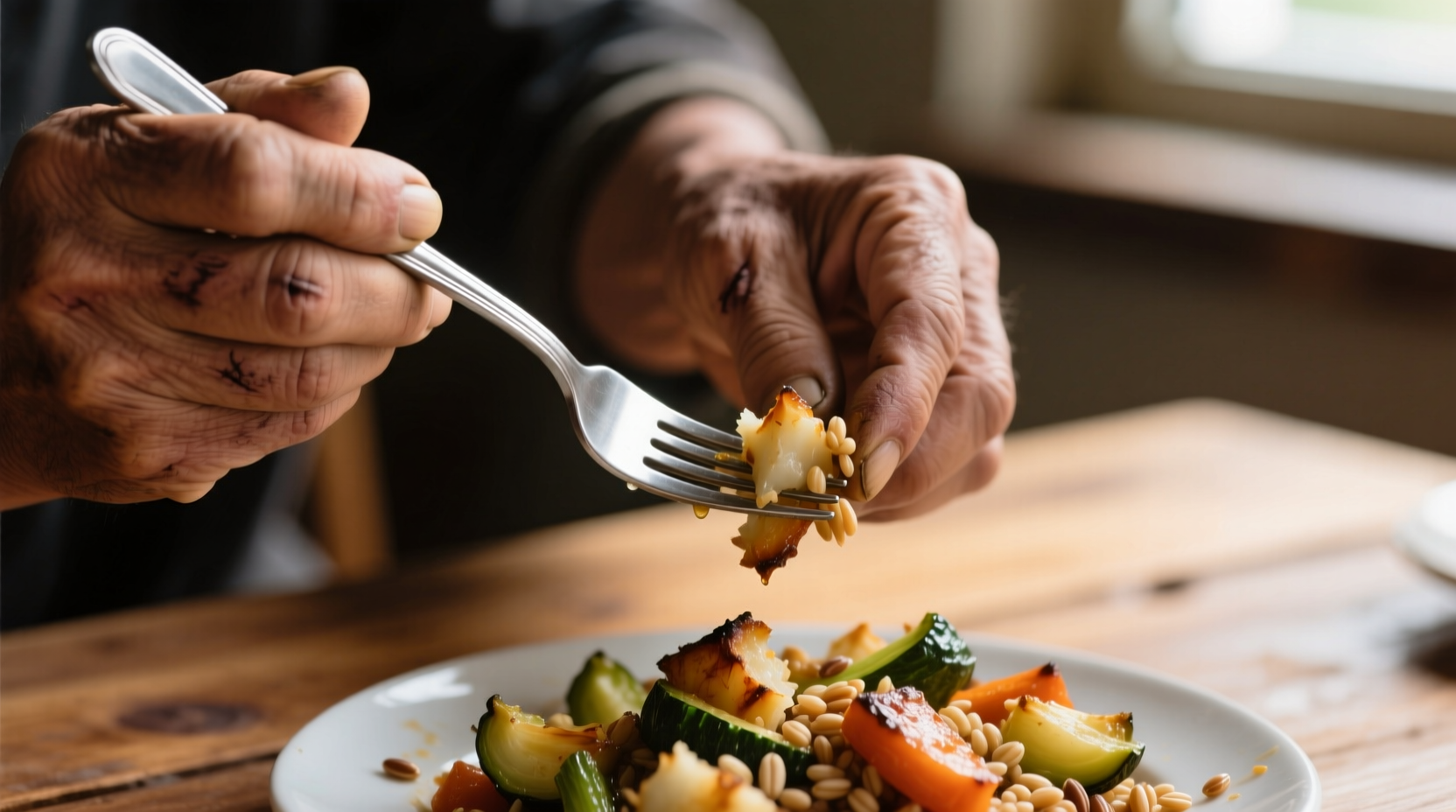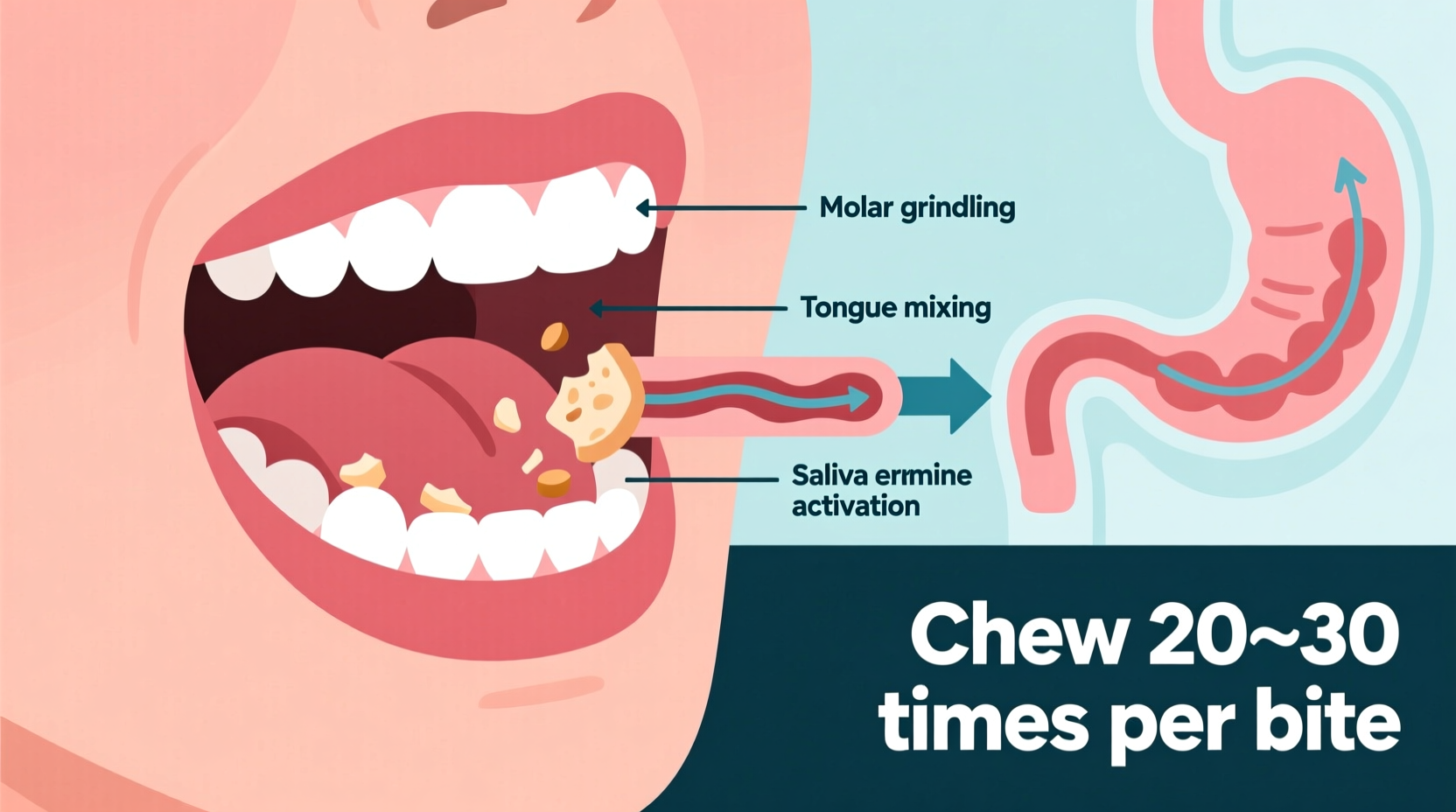Why Chewing Matters More Than You Think
Proper mastication isn't just about breaking down food—it's your digestive system's critical first step. When you chew thoroughly, you activate enzymes in your saliva that begin breaking down carbohydrates while signaling your stomach to prepare for incoming food. Research from the National Institute of Dental and Craniofacial Research shows that inadequate chewing can lead to digestive discomfort and reduced nutrient absorption.
What Science Says About Chewing Frequency
Nutritionists and dental professionals consistently recommend chewing each bite 30-40 times, though optimal counts vary by food type. A landmark study published in the Journal of the Academy of Nutrition and Dietetics tracked participants who chewed almonds 10, 25, or 40 times. Those who chewed 40 times absorbed 27% more nutrients and reported greater satiety than the 10-chew group.
| Food Type | Recommended Chews | Why This Range? |
|---|---|---|
| Meats & Proteins | 35-40 | Dense fibers require thorough breakdown for optimal protein absorption |
| Vegetables (raw) | 30-35 | Cell walls need breaking to release nutrients like beta-carotene |
| Grains & Bread | 25-30 | Prevents clumping that can cause digestive discomfort |
| Fruits | 20-25 | Natural enzymes aid digestion; over-chewing wastes nutrients |
Evolution of Chewing Recommendations
The concept of mindful chewing dates back to the early 1900s when Horace Fletcher, known as "The Great Masticator," advocated for chewing until food became liquid. Modern research has refined these recommendations through scientific measurement:
- 1906: Fletcher's popularized "Fletcherism" suggested 32 chews per bite
- 1980s: Dental researchers established links between chewing and jaw development
- 2005: NIH studies confirmed chewing's role in appetite regulation hormones
- 2014: CDC research connected thorough chewing with reduced obesity risk
- 2022: Current consensus solidified around 30-40 chews for optimal digestion
Practical Implementation Guide
Transitioning to mindful chewing doesn't require counting every chew. Try these evidence-based techniques:
Start with Strategic Food Choices
Foods with natural resistance like raw carrots or nuts train your jaw muscles. The American Dental Association recommends incorporating crunchy vegetables to strengthen chewing capacity gradually.
Use the Swallow Test
Before swallowing, ask: "Is this completely broken down?" If you feel distinct pieces, continue chewing. This technique prevents the common mistake of swallowing partially processed food.
Set Mealtime Parameters
Time your meals to last at least 20 minutes. Research shows it takes this long for satiety signals to reach your brain. Put your fork down between bites to maintain a steady chewing rhythm.

Common Misconceptions Debunked
Myth: "More chewing always equals better digestion."
Reality: Over-chewing fruits can destroy delicate nutrients. The optimal range varies by food type as shown in our comparison table.
Myth: "Chewing gum substitutes for thorough chewing during meals."
Reality: While gum stimulates saliva production, it doesn't provide the mechanical breakdown or nutrient release of actual food chewing.
Health Benefits Beyond Digestion
Proper chewing frequency delivers multiple health advantages:
- Weight management: 2019 research in Obesity journal found thorough chewers consumed 12% fewer calories per meal
- Dental health: Stimulates saliva flow that neutralizes acids and prevents cavities
- Cognitive function: Increased blood flow to the brain during chewing enhances concentration
- Metabolic health: Properly broken-down food reduces insulin spikes after meals
When to Adjust Your Chewing Pattern
Individual factors may require customization of standard recommendations:
- Dental work: Those with dentures or braces may need to chew softer foods 10-15 times less
- Digestive conditions: IBS sufferers often benefit from increased chewing (up to 50 times) for difficult foods
- Aging: Reduced saliva production in seniors necessitates more chewing for dry foods
- Child development: Children should gradually increase from 10 chews at age 3 to adult levels by adolescence
Building Lasting Chewing Habits
Start with one meal per day where you focus on thorough chewing. Use these practical tips to make the practice sustainable:
- Cut food into smaller initial pieces to reduce required chewing
- Choose foods with natural resistance to strengthen jaw muscles
- Practice mindful eating by removing distractions during meals
- Use a timer to ensure meals last at least 20 minutes











 浙公网安备
33010002000092号
浙公网安备
33010002000092号 浙B2-20120091-4
浙B2-20120091-4